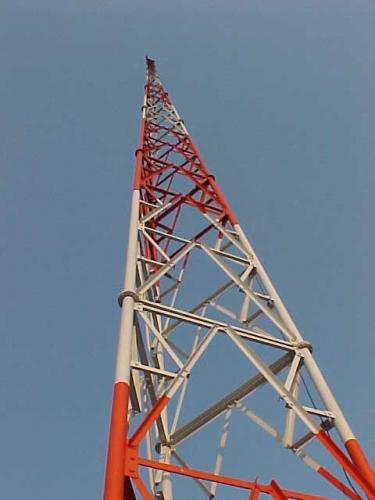A Detailed Guideline for Self- Supporting Towers In India

Self-Supporting Tower Designs are suited to nearly all wireless communication applications. These towers are typically three or four-sided fretwork type structures made from a solid rod, pipe, or angle. These are inexpensive to purchase, transport, and install. They are, sometimes referred to as “free-standing antenna towers” or “wireless communication towers” which are the most popular and versatile type of structure used today in the wireless industry.
Advantages of Self-Supporting Towers:
One major benefit of using self-supporting telecom towers is that they need very little space. This is why these towers have opted in civilized areas, where space is usually limited.
Common Types of Self-Supporting Telecom Towers
1. Four Leg Square Angular Self-Supporting Telecom Tower
The four-legged square angular tower is a self-supporting telecom tower that is built of square angular elements designed on a square base platform.
Advantages
Four leg square angular self-supporting telecom tower has lower freight cost due to freight efficiency. These towers are designed to sustain medium to heavy loads. The Four-leg self-supporting telecom towers are primarily used for cellular and medium weight backbone sites depending upon various Self-Supporting Tower Specifications.
2. Three Leg Angular Self-Supporting Telecom Tower
The three-legged angular self-supporting telecom towers can be built of angular elements designed on a triangular base platform.
Advantages
The Three leg angular self-supporting telecom tower provides good value for money because of high weight/ capacity efficiency. These telecom towers are built to sustain light to medium weight and are used at typical cellular GSM sites.
3. Three Leg Triangular Tubular Self-Supporting Telecom Tower
The three-legged triangular tubular self-supporting telecom tower is built of tubular leg elements with tubular bracing members.
Advantages
The three leg triangular tubular self-supporting telecom tower can sustain heavy wind load. They are typically designed for medium weight backbone sites and communication centres. This type of self-supporting telecom towers is built to sustain medium to heavy loads.
Self-Supporting Tower Manufacturers in India are finding this industry a very fruitful field to venture in.
Features
There are certain specialized features of this type of towers supplied by Self-Supporting Towers India. They are available in various shapes and sizes ranging from 7m to 140m. Most of them are designed to the latest standards. There is a specific design standard followed by all the top engineering companies for the proper iterative approach. The features are maintained in such a manner that they offer reputable structure and service for a longer period of time. You can always opt for certain changes in loading and design depending upon your requirements.
Advantages of Self-Supporting Towers:
One major benefit of using self-supporting telecom towers is that they need very little space. This is why these towers have opted in civilized areas, where space is usually limited.
Common Types of Self-Supporting Telecom Towers
1. Four Leg Square Angular Self-Supporting Telecom Tower
The four-legged square angular tower is a self-supporting telecom tower that is built of square angular elements designed on a square base platform.
Advantages
Four leg square angular self-supporting telecom tower has lower freight cost due to freight efficiency. These towers are designed to sustain medium to heavy loads. The Four-leg self-supporting telecom towers are primarily used for cellular and medium weight backbone sites depending upon various Self-Supporting Tower Specifications.
2. Three Leg Angular Self-Supporting Telecom Tower
The three-legged angular self-supporting telecom towers can be built of angular elements designed on a triangular base platform.
Advantages
The Three leg angular self-supporting telecom tower provides good value for money because of high weight/ capacity efficiency. These telecom towers are built to sustain light to medium weight and are used at typical cellular GSM sites.
3. Three Leg Triangular Tubular Self-Supporting Telecom Tower
The three-legged triangular tubular self-supporting telecom tower is built of tubular leg elements with tubular bracing members.
Advantages
The three leg triangular tubular self-supporting telecom tower can sustain heavy wind load. They are typically designed for medium weight backbone sites and communication centres. This type of self-supporting telecom towers is built to sustain medium to heavy loads.
Self-Supporting Tower Manufacturers in India are finding this industry a very fruitful field to venture in.
Features
There are certain specialized features of this type of towers supplied by Self-Supporting Towers India. They are available in various shapes and sizes ranging from 7m to 140m. Most of them are designed to the latest standards. There is a specific design standard followed by all the top engineering companies for the proper iterative approach. The features are maintained in such a manner that they offer reputable structure and service for a longer period of time. You can always opt for certain changes in loading and design depending upon your requirements.
Advertise on APSense
This advertising space is available.
Post Your Ad Here
Post Your Ad Here
Comments